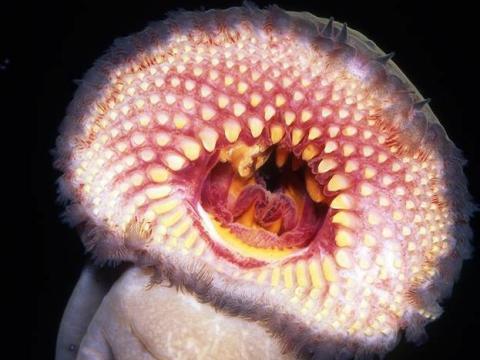Lamprey fish have terrifying teeth and no jaw — but there's a global movement to save this living fossil.
The blood-sucking, ancient lamprey might look spooky, but its evolutionary and culinary history is setting fishermen, conservationists, and chefs across the globe on a mission to preserve the living fossils in decline.
As one of the most primitive vertebrates alive today, scientists have recorded about 40 different species of the jawless, eel-like fish.
"They have an oral disc with several quite savage looking teeth inside and they use this to attach to larger fish out in the ocean, raft a hole then feed on blood and fluids and even chunks of flesh," SARDI research scientist Chris Bice said.
"They only feed in the marine environment and as soon as they move into freshwater [from saltwater] and start their upstream migration, they stop feeding.
"So, whilst they may look a bit savage, they are of no risk or danger to humans."
Lamprey are found all over the world, but numbers of the most common species in Australia, the parasitic pouched lamprey and short-headed lamprey, had been in decline and are only now slowly recovering in the mighty Murray River.
"It's largely because of the construction of things, like weirs to regulate flows that then represent barriers to migration for the lamprey on their way to their spawning habitat," Mr Bice said.
"There's a lot of action that has been undertaken now to support their migration a bit more, and we are seeing some pretty positive signs of their abundance in certain locations."

